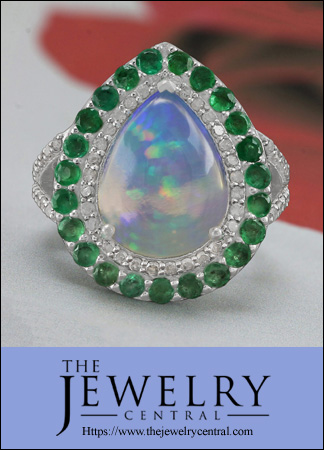Tiffany & Co. reporting its financial results for the three months (second quarter/Q2) and six months (first half/H1) ended July 31, 2019 reported that worldwide net sales for both periods were lower on a reported basis.
In the second quarter, Tiffany’s worldwide net sales declined by 3% to touch US$1.0 billion and comparable sales declined 4%. On a constant-exchange-rate basis, net sales declined 1% y-o-y, and comparable sales declined 3%.
In the first half, the Company’s worldwide net sales also declined by 3% to US$2.1 billion and comparable sales declined 4%. On a constant-exchange-rate basis, net sales were lower by 1% y-o-y and comparable sales declined 2%.
“Net earnings also declined in both periods, reflecting lower operating margins, a higher effective income tax rate for the second quarter and a lower effective income tax rate for the first half, in each case, as compared to the prior year,” Tiffany stated.
Second quarter net earnings of US$136 million were 6% lower than those in the same period of the previous year’s net earnings of US$145 million; and net earnings per diluted share were US$1.12 as compared to US$1.17 in the previous year.
Net earnings for the first half of US$261 million stood 9% below than US$287 million reported for the same period of the previous year; and net earnings per diluted share were US$2.15 against US$2.31 in the prior year.
Analysing its performance regionwise, Tiffany reported: “In the Americas, total net sales decreased 4% in both the second quarter and the first half, to US$455 million and US$861 million, respectively; comparable sales decreased 4% in the second quarter and 5% in the first half.”
The Company’s management attributed the decline – which was evident across the region — to lower spending by foreign tourists and, to a lesser extent, local customers. On a constant-exchange-rate basis, total sales and comparable sales both declined 4% in the second quarter and first half.
“In Asia-Pacific, total net sales decreased 1% in both the second quarter and the first half, to US$298 million and US$622 million, respectively, which included comparable sales declines of 3% in the second quarter and 4% in the first half, and also reflected the opening of new stores and increased wholesale sales in both periods,” Tiffany said.
The decrease in sales in both periods in the Asia-Pacific region was attributed to the effect of foreign currency translation by the Company’s management. On a constant-exchange-rate basis, total sales increased 3% in both the second quarter and first half, while comparable sales increased 1% and were unchanged, respectively.
“Sales performance in both periods reflected strong growth in mainland China, softness in Hong Kong and mixed performance in other markets in the region,” Tiffany remarked. “Management attributed these sales results to higher spending by local customers largely offset by lower spending by foreign tourists.”
Moving to its performance in Japan, Tiffany reported total net sales of US$155 million in that region for the second quarter, which were unchanged y-o-y. But first half sales registered a decline of 2% to US$300 million. Comparable sales decreased 1% and 2%, respectively. On a constant-exchange-rate basis, total sales decreased 1% in both the second quarter and first half, and comparable sales decreased 3% and 2%, respectively.
“In Europe, total net sales declined 4% in both the second quarter and the first half, to US$116 million and US$219 million respectively, and comparable sales declined 6% and 7%, respectively, due to the effect of foreign currency translation,” Tiffany reported. On a constant-exchange-rate basis, total sales remained unchanged in the second quarter and increased 2% for the first half; while comparable sales declined 2% and 1%, respectively. “Sales results were negatively affected in both the second quarter and first half by broad-based regional softness,” the Company noted.
Other net sales were unchanged at US$25 million in the second quarter and increased by 8% in the first half to US$50 million, the Company stated. “The increase in the first half is primarily due to an increase in wholesale sales of diamonds in the first quarter,” Tiffany observed. Comparable sales declined 29% and 22% in the second quarter and the first half, respectively.
While three Company-operated stores were opened in the first half, Tiffany closed two in the same period. As at July 31, 2019, the Company operated 322 stores (124 in the Americas, 90 in Asia-Pacific, 56 in Japan, 47 in Europe, and five in the UAE).
Breaking down the sales for jewellery categories for the second quarter and first half, Tiffany reported that sales of Jewellery Collections was unchanged for both periods; Engagement Jewellery declined 3% and 4%, respectively; and Designer Jewellery declined 10% and 12%, respectively.
Tiffany reported that net inventories as at July 31, 2019 were 3% above the prior year.
At July 31, 2019, cash and cash equivalents and short-term investments totalled US$681 million. Total debt (short-term borrowings and long-term debt) of US$1.0 billion represented 32% of stockholders’ equity, which is the same as a year ago, the Company stated.
Alessandro Bogliolo, Chief Executive Officer, commented: “Our second quarter and first half results were mixed with sales coming in below, but net earnings exceeding, our expectations. As with the first quarter, we are encouraged in the second quarter by sales growth attributed to our local customer base globally, which was again led by double digit growth in mainland China. With the tough comparison to last year’s strong performance in the first half behind us, and in spite of the headwinds of weak demand from foreign tourists, currency exchange rate pressures and continuing business disruptions in Hong Kong, we are actively managing what is in our control and positioning our Brand to win – accelerating new product introductions and keeping a visible profile.”
However, Tiffany’s management maintained its guidance for the fiscal year ending January 31, 2020 (fiscal 2019).
New Source : gjepc
Disclaimer: This information has been collected through secondary research and TJM Media Pvt Ltd. is not responsible for any errors in the same.




























